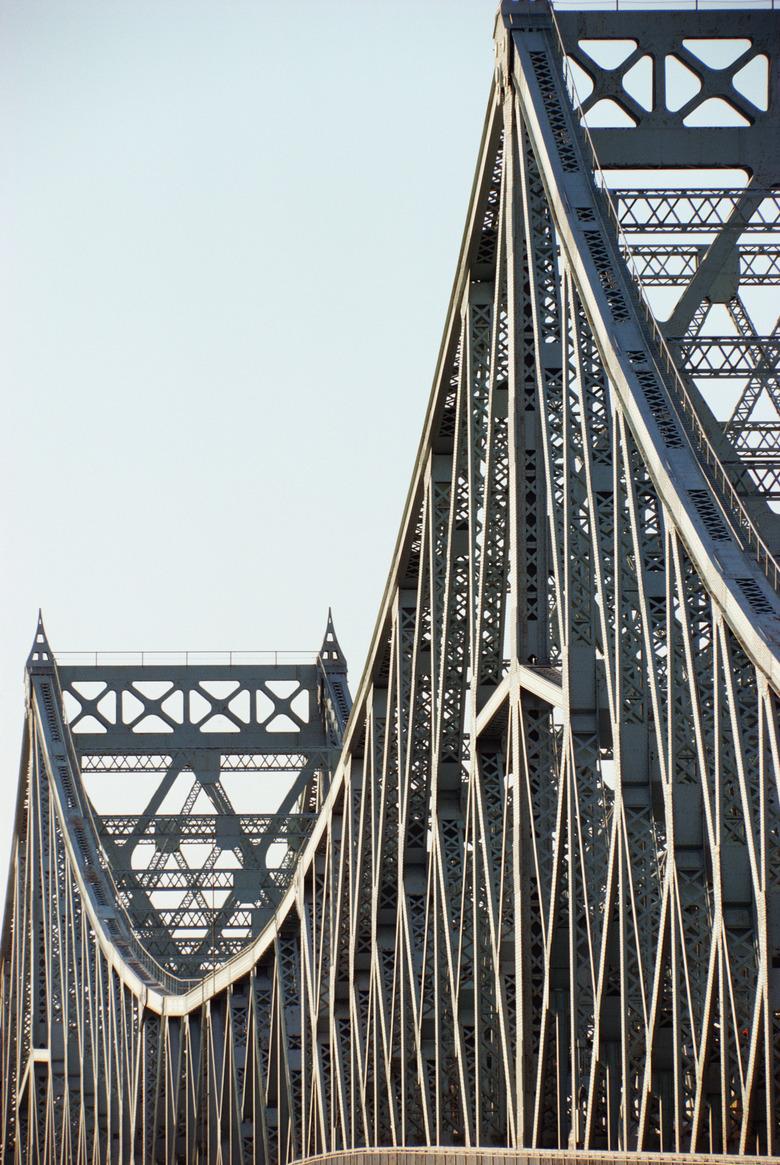Joist Vs. Truss
In architecture and engineering, joists and trusts are two methods that support weight and provide structural integrity. While much different in design and function, joists and trusses are often used together in construction projects. While joists support the weight of floors and ceilings, trusses have a wide variety of applications, including supporting roofs and in bridge design.
Joists
Joists are supports that run between walls or beams to support the weight of floors, roofs and ceilings. A building will typically have a large number of joists, spaced according to building codes to safely distribute weight. Joists can be made of steel, concrete or wood. In residential construction, wood is most common, with engineered wood products called I-joists typically being used in new home construction because of their low price and versatility.
Joist Applications
Joists are popular in home construction because they are versatile, cost-efficient, and often easy for contractors to work with. For example, engineered wood joists are typically large enough and strong enough that many holes can be drilled in them in order to run electrical wires and plumbing pipes through without endangering the structural integrity of the floor or ceiling. Joists are often used to construct trusses as well, specifically in building roofs on new homes.
Trusses
A truss is typically made of at least one triangular unit, with straight pieces that connect at locations called "nodes." The simplest type of truss consists of two diagonal beams set against a vertical center beam, but engineers have come up with many variations on the basic concept so that trusses can be used in a wide variety of applications. Trusses are popular because their design allows for a more stable distribution of weight.
Truss Applications
Because trusses are versatile and strong, they are used in a number of applications, including home construction and bridge construction. Trusses make excellent roofs because they provide both pitch, which is necessary to keep rain or snow from accumulating, and tensile strength. In bridge design, trusses are useful and popular because they efficiently allow distribute dynamic forces, such as the weight of a passing vehicle, throughout the structure of the bridge without causing buckling or shearing.
